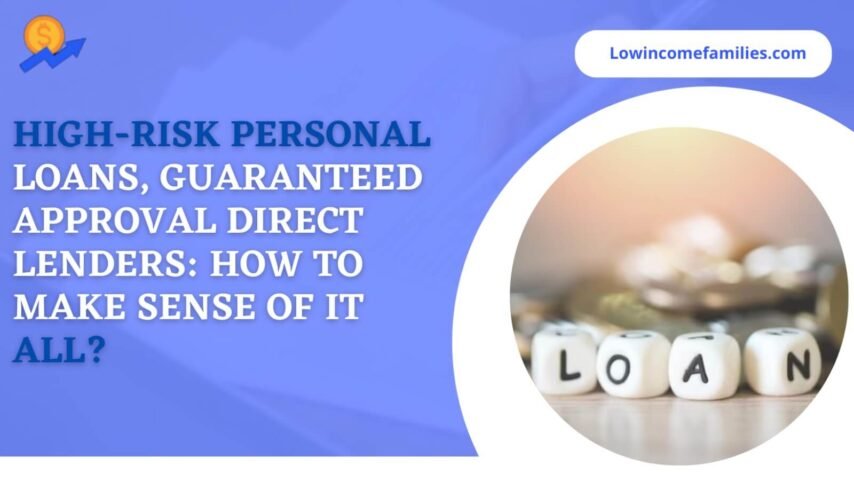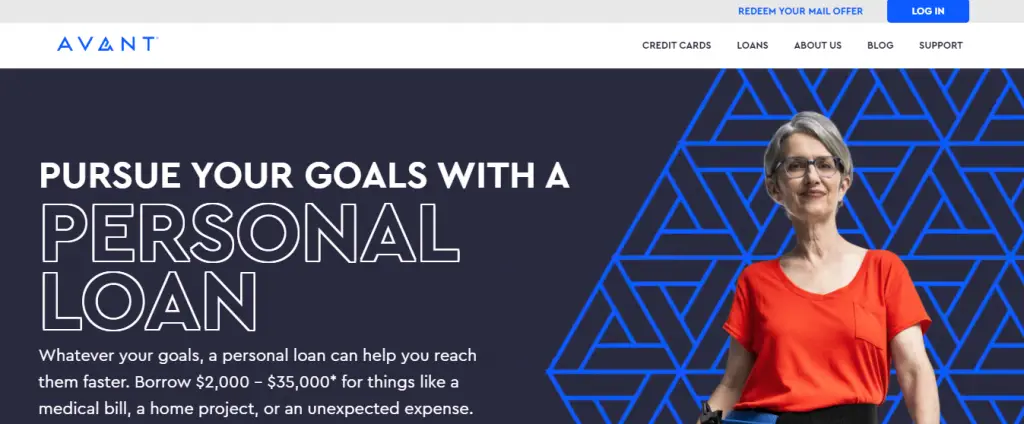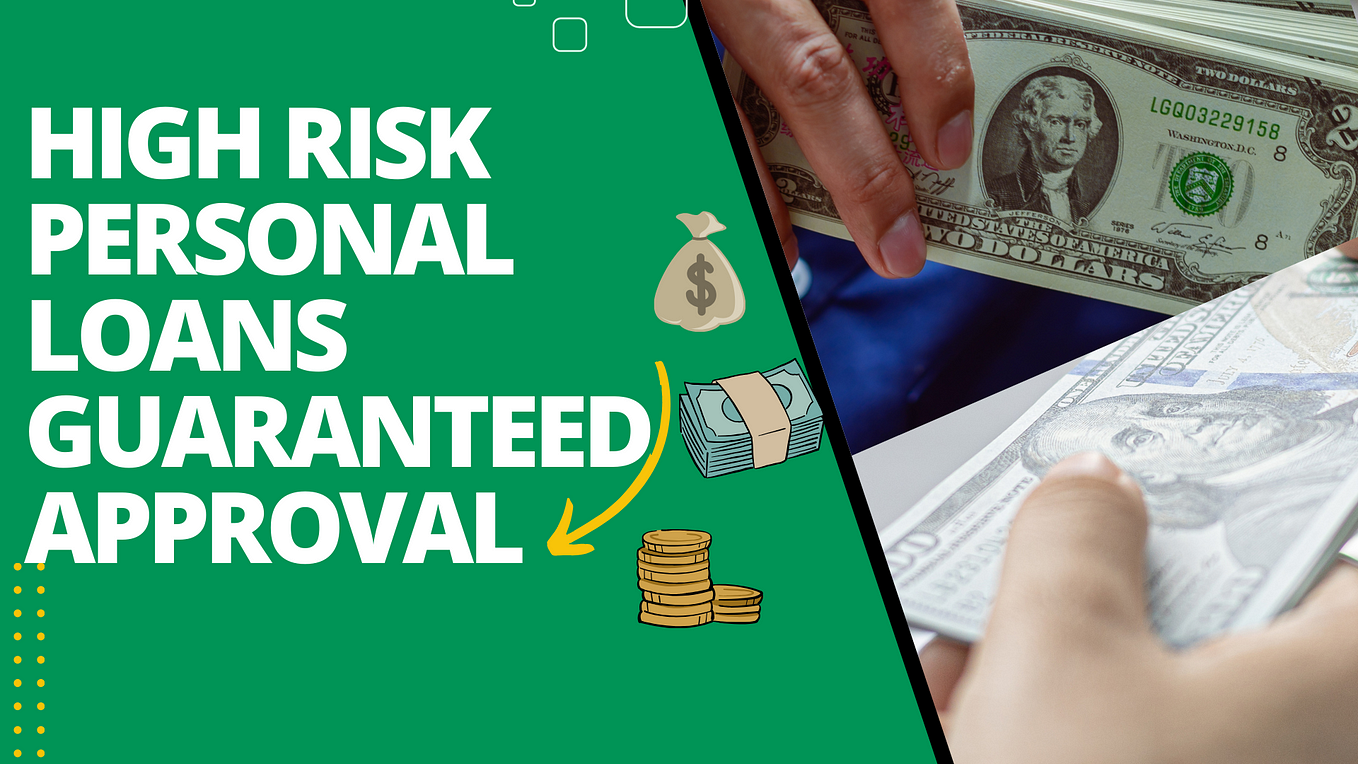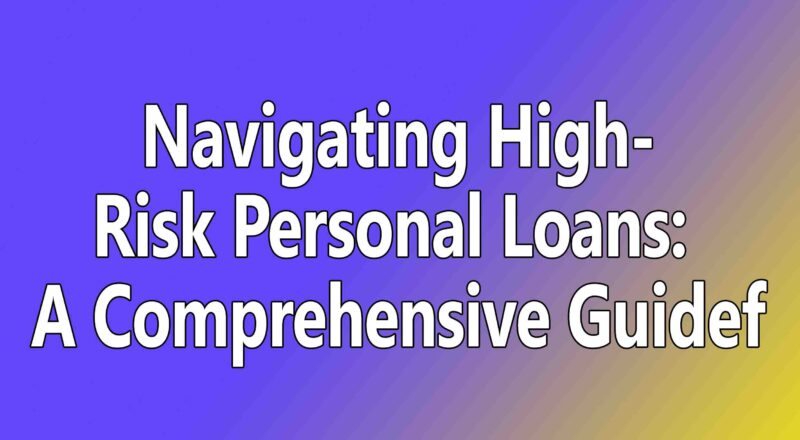High-risk Personal Loans Guaranteed Approval Direct Lenders Online

The siren song of "guaranteed approval" for high-risk personal loans online is luring vulnerable borrowers into potentially devastating debt traps. These direct lenders, often operating with minimal oversight, promise easy access to funds regardless of credit history. But the reality behind this seemingly benevolent offer can be far more predatory than helpful, leaving individuals facing exorbitant interest rates, hidden fees, and a cycle of debt that's difficult to escape.
This article delves into the murky world of high-risk personal loans guaranteed approval from direct lenders online. We’ll examine the claims made by these lenders, the actual terms offered, the regulatory landscape (or lack thereof), and the potential consequences for borrowers. We will also explore what to look for when navigating the high risk personal loan landscape.
The Allure and the Reality of "Guaranteed Approval"
The promise of "guaranteed approval" is the bait. Individuals with poor credit, limited financial resources, or a pressing need for cash find this offer particularly appealing. Marketing often targets those who have been rejected by traditional lenders.
However, "guaranteed approval" rarely means approval for anyone. What it often signifies is a willingness to lend to high-risk borrowers, but at a significant cost. This cost manifests in the form of exceptionally high interest rates, often exceeding 36% and sometimes reaching triple digits.
Furthermore, the loans frequently come with a host of fees. Origination fees, late payment penalties, and even prepayment penalties can significantly increase the overall cost of borrowing, making the total repayment amount far higher than the initial loan principal.
Direct Lenders: Operating in the Shadows?
The online nature of these direct lenders makes oversight challenging. Many operate across state lines or even internationally, making it difficult for regulators to track their activities and enforce consumer protection laws. This lack of accountability allows some unscrupulous lenders to thrive.
Unlike traditional banks and credit unions, these direct lenders are often not subject to the same rigorous regulations and compliance standards. This freedom from scrutiny can translate into unfair lending practices.
Some legitimate online lenders do cater to the high-risk market responsibly. However, distinguishing them from predatory lenders requires careful due diligence, which many borrowers, desperate for funds, may fail to undertake.
The Regulatory Landscape: A Patchwork of Laws
The regulation of online lending varies significantly from state to state. Some states have implemented strict usury laws that cap interest rates, effectively limiting the ability of these lenders to operate. Other states have more lenient regulations, creating opportunities for predatory lending practices.
At the federal level, the Truth in Lending Act (TILA) requires lenders to disclose the annual percentage rate (APR) and other loan terms. This helps borrowers understand the true cost of borrowing. However, TILA alone is not enough to prevent predatory lending.
Consumer advocacy groups are pushing for stronger federal regulations. These groups are working to establish a level playing field and protect vulnerable borrowers from being exploited by unscrupulous lenders.
The Consequences for Borrowers: A Debt Trap
The high interest rates and fees associated with these loans can quickly lead to a cycle of debt. Borrowers often find themselves unable to repay the loan on time, leading to late payment penalties and further increasing the outstanding balance.
Many borrowers end up taking out additional loans to cover existing debts. This leads to an ever-increasing debt burden that can have severe consequences for their financial health and overall well-being. The cycle can be incredibly difficult to break.
The consequences extend beyond financial hardship. Debt can cause stress, anxiety, and depression, negatively impacting borrowers' relationships and overall quality of life. In severe cases, it can lead to bankruptcy and foreclosure.
Red Flags and Precautions: Protecting Yourself
Several red flags can help borrowers identify potentially predatory lenders. Be wary of any lender that guarantees approval without checking your credit history, asks for upfront fees before the loan is disbursed, or uses aggressive or high-pressure sales tactics. Trust your gut.
Always compare offers from multiple lenders before making a decision. Pay close attention to the APR, fees, and repayment terms. Consider consulting with a financial advisor or credit counselor for guidance.
Explore alternative options before resorting to high-risk personal loans. These may include borrowing from friends or family, seeking assistance from local charities, or exploring government assistance programs.
Warning Signs of a Predatory Loan:
Guaranteed Approval without credit check.
High-pressure sales tactics and immediate funding offers.
Lack of transparency regarding fees and interest rates.
Requirement to pay upfront fees.
Looking Ahead: Towards Greater Protection
The increasing prevalence of online lending necessitates stronger consumer protections. Regulators must adapt to the changing landscape and implement measures to prevent predatory lending practices.
Increased transparency and standardization of loan terms are crucial. These measures would allow borrowers to make informed decisions and compare offers from different lenders more easily. Education is key.
Ultimately, addressing the root causes of financial vulnerability is essential. Providing access to affordable financial services and promoting financial literacy can help prevent individuals from falling prey to predatory lenders in the first place.


















